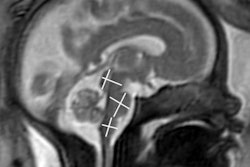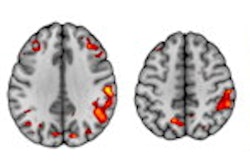
Children infected with the SARS-CoV-2 virus may develop asymptomatic or mildly symptomatic COVID-19 but later experience a second, severe inflammatory illness in the brain that shows up as signal changes in the splenium of the corpus callosum on MRI, according to a study published on 1 July in JAMA Neurology.
The findings suggest that clinicians caring for children infected with SARS-CoV-2 should be on the alert for secondary neurological symptoms, wrote a team led by Dr. Omar Abdel-Mannan of Great Ormond Street Hospital for Children in London, U.K.
"Increasing reports of children developing systemic inflammatory response requiring intensive care (labeled pediatric multisystem inflammatory syndrome temporally associated with COVID-19) and a further group of children with far less severe, Kawasaki-like disease ... suggest that despite the typically mild acute infection, children may be at high risk of a secondary inflammatory syndrome," the group wrote.
Since the COVID-19 pandemic hit, some researchers have reported on neurological manifestations of COVID-19 in adults, but less is known about these manifestations in children, the group noted. To address this knowledge gap, Abdel-Mannan and colleagues assessed 50 patients under the age of 18 who presented at the hospital between 1 March and 8 May with the SARS-CoV-2 virus; infection was confirmed by either reverse transcription polymerase chain reaction (RT-PCR) assay or IgG antibody test.
Of these 50, 27 had symptoms suggesting COVID-19 pediatric multisystem inflammatory syndrome in children (MIS-C). Four of these 27 (14.8%) had neurological symptoms such as encephalopathy, headaches, brainstem and cerebellar signs, muscle weakness, and reduced reflexes. All four of these children required admission into the intensive care unit, and all four tested negative for other possible causes of infection.
The researchers found that the four children with neurological symptoms had a clinical profile that involved damage in both the central nervous system and the peripheral nervous system plus splenial lesions on brain MRI -- a constellation of indicators that tends to be rare among children but can be seen sometimes in a condition called hemophagocytic lymphohistiocytosis, which is characterized by "a cytokine storm with multiorgan dysfunction," they noted.
"The phenotype of our cohort raises the possibility of a virus-specific immunological syndrome," the group wrote.
The possibility of a syndrome specific to SARS-CoV-2 is why clinicians should add SARS-CoV-2 infection to their list of possible diagnoses when children present with new neurologic symptoms and changes in the splenium on MRI, according to the group.
"Because respiratory symptoms were uncommon in this cohort and, when present, were mild and easily missed, and because reports are growing of children carrying COVID-19 infection without symptoms ... SARS-CoV-2 should also be considered in pediatric patients presenting with primary neurologic symptoms without systemic involvement," the team concluded.



















